Around the middle of his life, Ulisse Aldrovandi (1522-1605), always very attentive to managing his own public image, changed his visual and communication strategies. However, it is only around the middle of the 1580s that portraits, until that point confined to the domestic sphere, began to acquire centrality in Aldrovandi’s cultural project; around the same time, in 1586, as the historical and methodological premise of that project, he wrote his autobiography. The exhibition shows the major iconographic options characterizing the portraits of Aldrovandi, starting from Florentine painter Lorenzo Bernini, whose work was accompanied by Jan Cornelis Wterwer’ distich Non tua, Aristoteles, haec est, sed Ulyssis imago: Dissimilis vultus, par tamen ingenium – which suggested a strong analogy between Aldrovandi’s and Aristotle’s research methods and goals.
